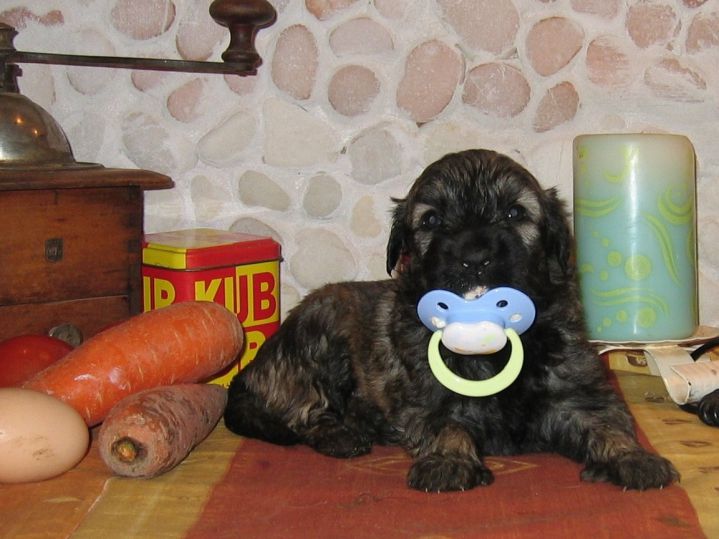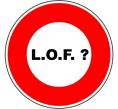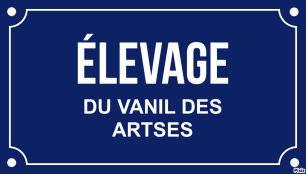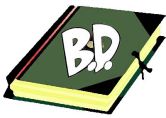
JENLAIN
Couleur: fauve





Naissances de 2 F + 6 M
chien de Berger Catalan
18-06-2024
Prénoms provisoires qui peuvent être changé par l'acquéreur
Parents et grands parents visibles sur place
Naissances de 2 F + 5 M
chien de Berger Catalan
04-07-2024
Prénoms provisoires qui peuvent être changé par l'acquéreur
Parents et grands parents visibles sur place
COULEUR EXCEPTIONNELLE ET RARE : NOIR & FEU





Les chiots ci dessous sont en cours de réservation ,
il seront retirés du site au moment de leur réservation définitive





KRONENBOURG
Couleur:fauve charbonné
SKOLL
Couleur: fauve charbonné
double ergots aux 4 pattes
MOUSEL
Couleur:fauve charbonné
BECK'S
Couleur: fauve charbonné
double ergots anterieur droit
LEFFE
Couleur: fauve
proprietaire Marianne et Jean-Paul LAHAYE – HENRION-BELGIQUE
TOURTEL
Couleur: fauve charbonné
double ergots aux 4 pattes
Propriétaire Annick Desamy













Naissances de 2 F + 5 M
chien de Berger Catalan
04-07-2024
Prénoms provisoires qui peuvent être changé par l'acquéreur
Parents et grands parents visibles sur place



Toutes les photos sont défilantes , vous pouvez cliquer sous la photo pour les changer plus vite sur le petit rond gris






ADELSCOTT
Couleur: fauve
FISCHER
Couleur: fauve
KWAK
Couleur: sable cendré
HEINEKEN
Couleur: grise
Propriétaire : Eloïse et Damien Petitjean.






Naissances de 2 F + 6 M
chien de Berger Catalan
18-06-2024
Prénoms provisoires qui peuvent être changé par l'acquéreur
Parents et grands parents visibles sur place



Toutes les photos sont défilantes , vous pouvez cliquer sous la photo pour les changer plus vite sur le petit rond gris


CONSEILS AU NOUVEAU PROPRIÉTAIRE DE CHIOT
Sur le chemin des chiots vers leur nouvelle maison, je voulais aborder un problème commun que les éleveurs rencontrent avec les nouveaux propriétaires.
ATTENTES RÉALISTIQUES !
Vous voyez les photos et vidéos de l'éleveur et les chiots sont tous sociaux. Ils sont tranquilles dans l’élevage. L'éleveur vous montre des vidéos d'eux complètement détendus, heureux et ludiques. Tout a l'air merveilleux et tu ramènes ton chiot à la maison.
Puis la réalité frappe. Les premières nuits, le chiot peut pleurer, vous laissant fatigué et agité. Un chiot heureux et câlin refuse de saluer la demi-douzaine d'amis trop excités que vous avez invités à voir votre nouveau chiot. Ou les enfants trop excités et joueurs que vous avez à la maison. Le chiot refuse de marcher en laisse (pourquoi il doit vous suivre vous êtes inconnue laisser lui le temps de vous aimer le temps pour vous de l’apprivoiser ! Beaucoup se demandent comment mon chiot parfait est devenu un cauchemar.
Parlons donc des attentes réalistes quand un chiot arrive à la maison. Au début, le chiot était chez l'éleveur dès sa naissance. Il avait sa mère et souvent des frères et sœurs de portée. Ils avaient leur routine, ont été initiés aux attentes et étaient à l'aise dans leur environnement.
Maintenant, il est soudainement amené à un environnement complètement nouveau. Imaginez vous à sa place et être exposé à un pays inconnu, souvent dans une autre partie du monde. Ils ne connaissent que quelques mots de la langue maternelle. D'autres arbres, animaux, odeurs, températures et gens. En attendant, nous changeons votre routine, décidons de faire la fête avec des gens que vous ne connaissez pas et vous demandons d'assumer des tâches dont vous n'avez aucune idée. C'est accablant, c'est le moins qu'on puisse dire.
C'est ce que chaque chiot traverse quand il arrive dans sa nouvelle maison. Le stress prend de nombreuses formes. Il ne mange pas, ne veut pas jouer et ne salue pas les gens. Ils sont anxieux quand ils doivent aller chez le vétérinaire ou quand des étrangers les attaquent. La diarrhée, les vomissements et la dépression peuvent également se produire.
Alors que pouvez-vous faire en tant que nouveau propriétaire pour aider votre petit bout à s'installer ?
- La plupart des chiots mettent 3 à 4 semaines pour s'adapter à leur nouvelle maison.
Je répète : TROIS à QUATRE SEMAINES, parfois même plus longtemps !
Pas seulement 1-2 jours. Je ne peux pas insister assez sur le temps qu'il faut à un chien ou un chiot pour se sentir à l'aise dans sa nouvelle maison !
- Limitez la présence dans la première semaine. Nous comprenons que vous êtes excité de montrer votre nouveau bébé, mais il faudra du temps pour vous connaitre l’un et l’autre la confiance doit s’installer. Prévoyez 1-2 semaines avant d'inviter de la visite.
- Demandez aux invités de s'asseoir par terre et laissez les chiots venir à vous. Surtout ne pas essayer d'attraper le chiot
- Établir une bonne routine – apprivoisez le avant – apprenez lui à vous faire confiance
- Confiner le chiot dans une petite zone de la maison, cela permet aussi de l'observer. Regardez ses réactions prenez le temps d’analyser son attitude
- Ne vous attendez pas à ce qu'un chiot de 8 à 13 semaines marche en laisse. Travaille en premier à la maison avec une laisse sur laquelle il se sent à l'aise. Laissez le tirer la laisse et encouragez le à vous accompagner, faites en un ami si il n’est pas attaché à vous pourquoi doit-il vous suivre ?
- Si votre chiot refuse de partir, donnez-lui du temps. Lors de mes premiers voyages en ville avec des chiots, une promenade autour d'un petit pâté de maisons a pris 1 heure et demi. Nous ne bougeons que lorsqu'ils initient le mouvement parce qu'ils ont besoin de temps pour comprendre et appréhender le nouvel environnement.
- Comprenez que votre chiot a besoin de temps pour vous voir en famille. Il est irréaliste de s'attendre à un attachement instantané.
- Entraîne ton chiot. Cela t’aidera non seulement à construire un lien, mais aussi à vous orienter et à s'orienter vers toi.
-Les enfants sont aussi un gros facteur de stress pour les petits chiots fragiles. Veuillez garder votre chiot sous contrôle à tout moment quand les enfants sont là.
- Et enfin, tu devrais être patient. N'expliquez pas, "quelque chose ne va pas avec ce chien". Rien ne se passe en une nuit. Les excursions devraient être prévues au rythme du chiot. Même si vous imaginez une belle promenade autour du lac, il est possible que votre chiot ne puisse courir qu'une courte distance ce jour-là.
La patience est primordiale Paris ne s’est pas fait en 1 jour !
Souvenez vous de ceci : si le chiot était merveilleux chez l'éleveur mais qu'il a des difficultés maintenant, en tant que propriétaire, vous devez aider le chiot à s'adapter, ce qui demande du temps, de la patience et surtout s’il vous plait de ayez des attentes réalistes et donnez des expériences positives avec votre chiot. Chaque chiot est un individu. Ne comparez pas votre chiot actuel aux anciens animaux de compagnie et ne jugez pas leur comportement en fonction de la façon dont un autre chien a fait. Enfin, essayez de voir les situations du point de vue du chiot mettez vous à sa place et ajustez les situations en conséquence.

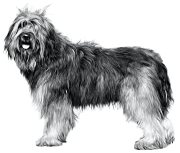
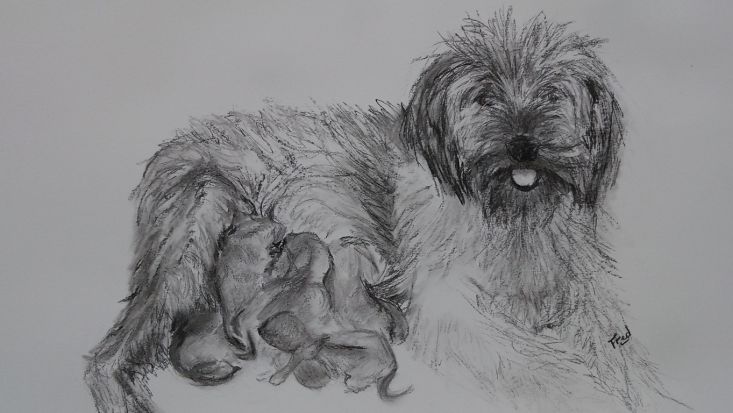
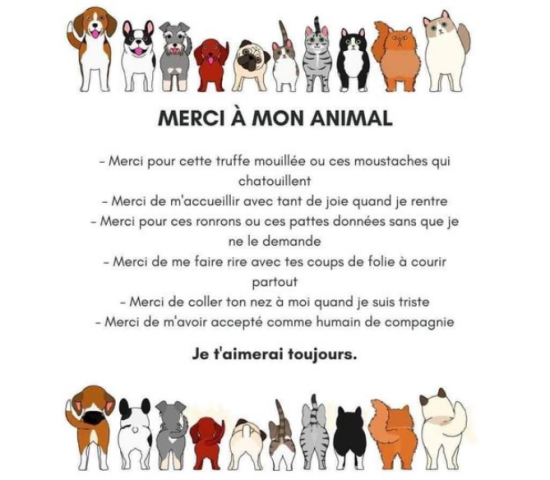
***** Documents et départ du chiot *****
Tous nos chiots partent avec :
* guide du chiot (envoi par Email )
* certificat de vente et de garanties (facture)
* certificat de bonne santé émis par notre vétérinaire
* carnet de santé avec primo-vaccins (C-H-P-PPI-L)
* certificat d'engagement
*un jouet avec odeur de sa fratrie qui sera son "doudou"
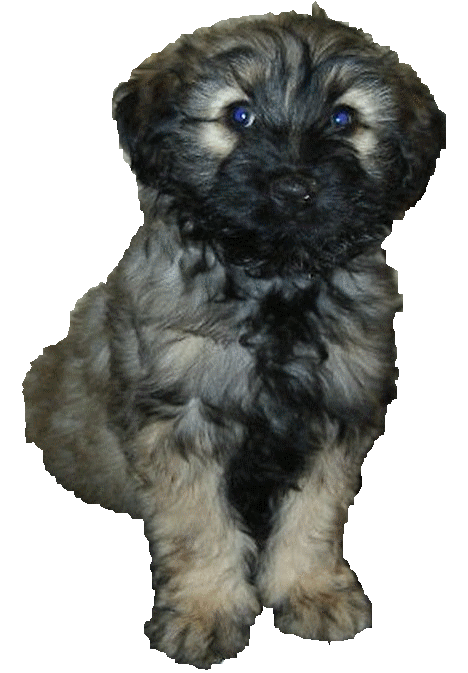




les "lunettes" du chiot vous donnent la couleur adulte
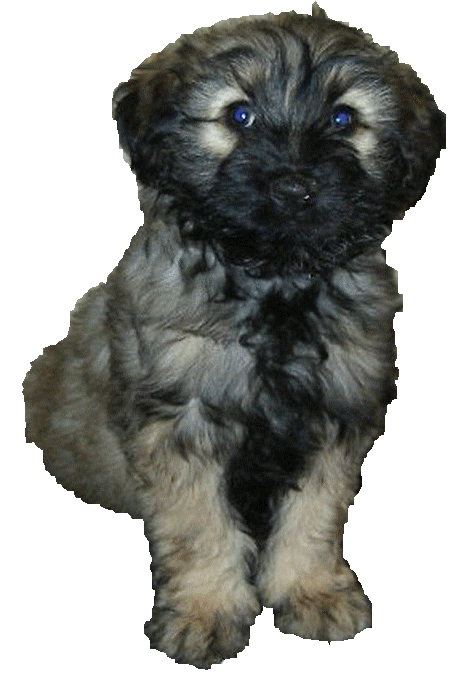
CHOOBAKA ADULTE
CHOOBAKA BEBE


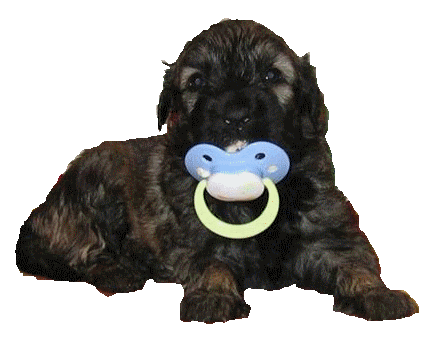
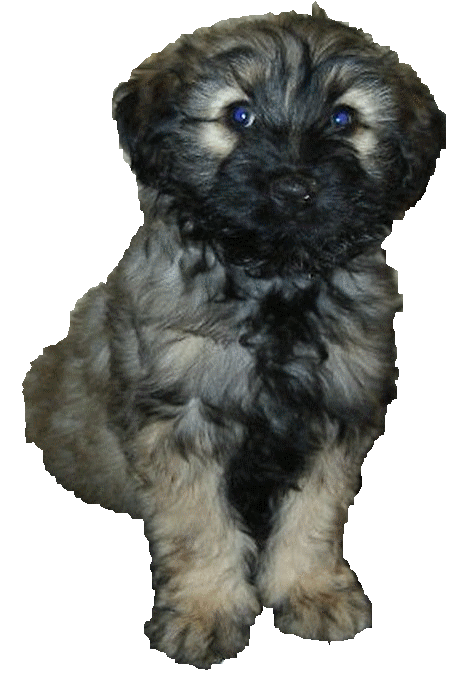

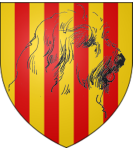
Les dangers de la castration
Dr Joël Dehasse
La castration, = gonadectomie = ablation chirurgicale des gonades (testicules, ovaires), est banalisée depuis des dizaines d'années. Elle est réalisée pour empêcher la reproduction (=stérilisation). Elle est souvent réalisée pour prévenir des affections (cancer mammaire) et modifier des comportements sexuels gênants (chevauchement sexuel, marquage urinaire, copulation).
Pourtant la gonadectomie n'est pas sans conséquences négatives ni sans danger pour la santé physique et mentale du chien.
Toutes les informations ci-dessous ont été publiées, avec les références des articles scientifiques, dans le livre numérique (Kindle): La stérilisation du chien. Pour ou contre?
Effets comportementaux de la gonadectomie
Mise à jour:
1 juillet 2019
1 avril 2020
Les % sont des données statistiques.
Comportements sexuels: marquage urinaire, chevauchements, copulation, masturbation: réduction importante chez 35% des chiens, réduction partielle à nulle chez 65% des chiens.
Victime de harcèlement sexuel: le chien mâle castré attire sexuellement les chiens mâles intacts, la chienne ovariectomisée souffre souvent de vulvite, vaginite, dermite périvulvaire, qui engendre des odeurs à attrait sexuel.
Agressivité (en général) : +30% (augmentation statistique de 30%)
Agressivité envers les humains non-familiers: +20 à 30%
Agressivité envers les humains familiers : +200% à +300%
Agressivité envers les enfants : +400%
Agression entre chiennes en chaleurs : réduction possible de récidive.
Coprophagie: +60%
Démence sénile: plus précoce, évolution plus rapide
Léchage des objets / gens: +30%
Léchage de soi-même: autoléchage: +40 à +50%
Mendicité alimentaire : +30 à 60%
Peurs: +30 à 70%
Peur de l'orage: +400% (étude chez le Vizsla)
Sensibilité au contact : +200% ; chez le Rottweiler: +460%
Vocalisations: +30%
Effets organiques / physiopathologiques de la gonadectomie
Les % sont des données statistiques.
Obésité : +150% (chienne) à +300% (mâle)
Mamelles : cancer : réduit (% variable)
Vagin, vulve: vaginite, vulvite, infection périvulvaire: augmenté
Vessie : cystite: +300% (chienne)
Prostate: hyperplasie bénigne et inflammation: réduction
Prostate: cancer : +400 à 800%
Vessie, rein: urolithiase: à struvite : +300% (chienne)
Vessie: incontinence urinaire (chienne): +1000% à 3000%
Pancréas: pancréatite: +2200% (chienne)
Diabète: +200% (mâle)
Thyroïde: hypothyroïdie: +300% (réf.)
Os, articulations : effet de la gonadectomie réalisée avant l'âge adulte: +300 à 500%
Dysplasie de la hanche : +200%
Ligaments croisés (du genou): distension ou rupture: + 200%
Rotule, luxation de la: +300%
Cancers: en moyenne +300 à +500% sauf cancer mammaire: réduit.
Ostéosarcome: +220 à 400%
Hémangiosarcome (rate, coeur): +160% (mâle) à +500% à +900% (chienne)
Lymphosarcome: +250% (mâle) à 500% (chienne)
Cancer de la peau: mastocytome, etc.: +300 à 600%
Carcinome de la vessie : +300%
Métrite, pyomètre: réduit, supprimé si hystérectomie.
Pourquoi la gonadectomie cause-t-elle autant de pathologies?
Les scientifiques ne savent pas.
Mon hypothèse: tentaive de sauvetage hormonal par synthèse d'hormones sexuelles par le foie, la graisse viscérale, les surrénales (et autres tissus), avec rupture de l'équilibre entre cette vingtaine d'hormones sexuelles, dont production d'hormones cancérigènes. En plus, dérégulation des organes (dont les cellules ont des récepteurs aux hormones sexuelles) : neurologie, immunologie, endocrinologie. Par exemple: importance des oestrogènes pour la mémorisation, modification de l'humeur et des émotions par les hormones sexuelles.
Alternatives à la gonadectomie
Réduction / suppression des comportements sexuels:
Implant desloréline : occasionnel
Cyprotérone par cures occasionnelles de 6 semaines
Stérilisation chirurgicale, avec maintien des hormones sexuelles:
Vasectomie (mâle)
Hystérectomie (chienne)
Gonadectomie chirurgicale
Déconseillée avant l'âge adulte
Déconseillée chez les races à risque de cancer
Conseillée chez les races à risque de cancer mammaire
Déconseillée chez les chiens peureux, anxieux
Déconseillée chez les races à risque d'hypothyroïdie (thyroïdite autoimmune génétique)
Références des articles scientifiques
Pour les lecteurs qui imagineraient les données statistiques non fondées, voici les références des articles scientifiques, mises dans l’ordre d’apparition dans mon livre : La stérilisation du chien : pour ou contre ?
Certaines références se retrouvent plusieurs fois.
Pour les avoir dans leur contexte, référez vous au livre.
Effets organiques de la castration
[1] Silvan Roland Urfer von Burgistein. Lifespan and Causes of Death in the Irish Wolfhound: Medical, Genetical and Ethical Aspects. Inaugural Dissertation. University Bern. 2007, p.57, 58, 93. (PDF)
[1] Zink C., Farhoody P. et alii. Evaluation of the risk and age of onset of cancer and behavioural disorders in gonadectomized Vizslas. JAVMA vol.244, n°3, Feb. 1, 2014, pp. 309-319. Résumé. PDF.
[1] Waters David, Kengeri Seema, Clever Beth, Booth Julie, Maras Aimee, Schlittler Deborah, Hayek Michael. Exploring mechanisms of sex differences in longevity: lifetime ovary exposure and exceptional longevity in dogs. Aging Cell. Vol.8, issue 6, p.752-755, Dec.2009. Résumé.
[1] Waters David. A healthier respect for ovaries. Ovaries and Longevity. http://www.gpmcf.org/respectovaries.html
Waters D., Kengeri S., Maras A., Chiang E. Probing the perils of dichotomous binning:How categorizing female dogs as spayed or intact can misinform our assumptions about the lifelong health consequences of ovariohysterectomy. Theriogenology; vo.76, Issue 8, Nov.2011, p.1496-1500. Résumé. PDF.
[1] Adams V., Watson P., Carmichael S., Gerry S., Penell J., Morgan D. Exceptional longevity and potential determinants of successful ageing in a cohort of 39 Labrador retrievers: results of a prospective longitudinal study. Acta Veterinaria Scandinavica 2016 58:29. Résumé. PDF.
Bermingham E., Thomas D, et alii. Energy Requirements of Adult Dogs: A Meta-Analysis. PLOS one, oct.14, 2014. Résumé & texte complet.
[1] Mc Greevy P., Thomson P., et alii. Prevalence of obesity in dogs examined by Australian veterinary practices and the risk factors involved. Veterinary Record 2005; 156: 696-702. Résumé.
[1] Lund E., Armstrong P. et alii. Prevalence and Risk Factors for Obesity in Adult Dogs from Private US Veterinary Practices. Inter J Appl Res Vet Med, vol.4, n°2, 2006 pp.177-186. Résumé. PDF.
[1] Lefebvre S., Yang M. et alii. Effetc of age at gonadectomy on the probability of dogs becoming overweight. JAVMA V.243, n°2, July 15, 2013, pp. 236-243. Résumé. PDF.
[1] Maarschalkerweerd R. et alii. Influence of orchiectomy on canine behaviour. The Veterinary record, June 14, 1997:617-619. PDF.
[1] Zwida K., Kutzler MA. Non-reproductive long-term health complications of gonad removal in dogs as well as possible causal relationships with post-gonadectomy elevated luteinizing hormone (LH) concentrations. Journal of Etiology and Animal health, Vol.1, n°1, March 2016. PDF: crescopublications.org/pdf/JEAH/JEAH-1-002.pdf
[1] Lawler D., Larson B. et alii. Diet restriction and ageingin the dog : major observations over two decades. British Journal of Nutrition Vol.99, issue 04, April 2008, pp.793-805. Résumé. PDF.
Merlo D., Rossis L. et alii. Cancer Incidence in Pet Dogs : Findings of the Animal Tumor Registry of Genoa, Italy. Journal of Internal Medicine. Vol.22, n°4, July-Aug. 2008, pp. 976-984. Résumé et texte.
[1] Grieco V., Riccardi E. et alii. Canine Testicular Tumours: a study on 232 dogs. Journal of Comparative Pathology, vol.138, n°1-2, Feb.-Ar.2008, pp.86-89.
[1] Nascimento E., Santos R. Patologia da reproduçao dos animais domesticos. 1997, in Mattos M. et alii. Cryptorchidism in dog. Ciência Animal 2000, 10 (1):61-70.
Liao Albert, Chu Pei-Yi et alii. A 12-Year Retrospective Study of Canine Testicular Tumors. Journal of Veterinary Medical Science. Vol.71 (2009) n°7 July pp.919-923. Résumé. PDF.
[1] Van Goethem B. et alii. Making a rational choice between ovariectomy and ovariohysterectomy in the dog: a discussion of the benefits of either technique. Veterinary Surgery. 35:136-143, 2006.
[1] Fukuda S. Incidence of Pyometra in Colony-raised Beagle Dogs. Exp. Anim.50 (4) 325-329, 2001. Résumé. PDF.
[1] Egenvall A. et alii. Breed risk of pyometra in insured dogs in Sweden. J Vet Med 15(6):530-538, 2001. In Fransson B., Ragle C. Canine Pyometra: An Update on Pathogenesis and Treatment. Compendium Vol.25, n°8, Aug. 2003. Pp.601-611. PDF.
[1] Bonnett B., et alii. Mortality in over 30,000 Insured Swedish dogs from 1995-2000: I. Breed-, Gender-, Age- and Cause-specific Rates. Acta Veterinaria Scandinavica 2005 46: 105. Résumé & texte.
[1] Johnston S., Kapolmatana K.et alii. Prostatic disorders in the dog. Animal Reproduction Science, Vol.60-61, 2 July 2000. Pp. 405-415. Résumé. PDF.
[1] Teske E., Naam E. et alii. Canine prostate carcinoma: epidemiological evidence of an increased risk in castrated dogs. Molecular and Cellular Endocrinology 197 (2002) 251-255. Résumé. PDF.
[1] Maarschalkerweerd R. et alii. Influence of orchiectomy on canine behaviour. The Veterinary record, June 14, 1997:617-619. PDF.
Bryan J., Keeler M., et alii. A population study of neutering status as a risk factor for canine prostate cancer. The Prostate 67:1174-1181 (2007). Résumé. PDF.
[1] Salmeri K., Bloomberg M. et alii. Gonadectomy in immature dogs: effects on skeletal, physical, and behavioral development. Journal of the American Veterinary Medical Association [1991, 198(7):1193-1203]. Résumé. PDF.
[1] Maarschalkerweerd R. et alii. Influence of orchiectomy on canine behaviour. The Veterinary record, June 14, 1997:617-619. PDF.
[1] Spain V., Scarlett J., Houpt K. Long-term risks and benefits of early-age gonadectomy in dogs. JAVMA Feb.1, 2004, vol.224, n°3, pp.380-387. Résumé. PDF.
[1] Okafor C., Pearl D. et alii. Risk factors associated with struvite urolithiasis in dogs evaluated at general care hospitals in the United States. JAVMA, Dec.15, 2013, Vol.243, n°12, pp.1737-1745. Résumé. PDF.
[1] Reichler IM, Hubler M. Urinary incontinence in the bitch: an update. Reproduction in Domestic Animals, vol.49, n°S2, June 2014, pp.75-80. Résumé et texte.
[1] Beauvais W., Cardwell J., Brodbelt D. The effect of neutering on the risk of urinary incontinence n bitches – a systematic review. JSAP vol.53, n°4, April 2012, pp.198-204. Résumé et texte.
[1] Lund E., Armstrong P. et alii. Prevalence and Risk Factors for Obesity in Adult Dogs from Private US Veterinary Practices. Inter J Appl Res Vet Med, vol.4, n°2, 2006 pp.177-186. PDF.
[1] Hess R. et alii. Evaluation of risk factors for fatal acute pancreatic in dogs. JAVMA, vol.214, n°1, January 1, 1999 pp.45-51. PDF.
[1] Killingsworth CR, Walshaw R. et alii. Bacterial population and histologic changes in dogs with perianal fistula. American Journal of Veterinary Research 1988, 49 (10): 1736-1741. Résumé. PDF.
[1] Zwida K., Kutzler MA. Non-reproductive long-term health complications of gonad removal in dogs as well as possible causal relationships with post-gonadectomy elevated luteinizing hormone (LH) concentrations. Journal of Etiology and Animal health, Vol.1, n°1, March 2016. Résumé. PDF.
[1] Bellumori T. et alii. Prevalence of inherited disorders among mixed-breed and purebred dogs: 27,254 cases (1995–2010). JAVMA vol.242, n°11, June 1, 2013, pp.1549-1555. Résumé. PDF.
[1] Mlodawska A., Max A. et alii. Influence of gonadectomy on serum FT4 concentration in male and female dogs. Electronic Joural of Polish Agricultural Universities. 2014, vol.17, n°1. Résumé. PDF. http://www.ejpau.media.pl/volume17/issue1/art-01.html
[1] Dehkordi R., Parchami A. Effect of orchidectomy and chronic androgen administration on thyroid gland in adult male dogs : a light and electron microscopic study. World Applied Sciences Journal 11 (3): 289-294, 2010.
[1] Günzel-Appel A., Seefeldt A. et alii. Effects of ganodectomy on prolactin and LH secretion and the pituitary-thyroid axis in male dogs. Theriogenology. March 15, 2009. Vol.71, n°5, pp.746-753. Résumé. PDF.
[1] Powers M. et alii. Prevalence of cranial cruciate ligament rupture in a population of dogs with lameness previously attributed to hip dysplasia: 369 cases (1994–2003). JAVMA October 1, 2005, Vol. 227, No. 7, Pages 1109-1111. Résumé. PDF.
[1] Hart B. et alii. Long-Term Health Effects of Neutering Dogs: Comparison of Labrador Retrievers with Golden Retrievers. PLOS One. July 14, 2014. Résumé et texte.
[1] Hart B et alii. Neutering of German Shepherd Dogs: associated joint disorders, cancers and urinary incontinence. Veterinary Medicine and Science. Volume 2, Issue 3, August 2016, Pages 191–199. Résumé et texte.
[1] Salmeri K., Bloomberg M et alii. Gonadectomy in immature dogs: effects on skeletal, physical, and behavioral development. Journal of the American Veterinary Medical Association [1991, 198(7):1193-1203] Résumé. PDF.
[1] Spain V., Scarlett J., Houpt K. Long-term risks and benefits of early-age gonadectomy in dogs. JAVMA Feb.1, 2004, vol.224, n°3, pp.380-387. Résumé. PDF.
[1] Witsberger T., et alii. Prevalence of and risk factors for hip dysplasia and cranial cruciate ligament deficiency in dogs. JAVMA June 15, 2008, Vol. 232, No. 12, pp. 1818-1824. Résumé. PDF.
[1] Torres de la Riva G. et alii. Neutering Dogs: Effects on Joint Disorders and Cancers in Golden Retrievers. February 13, 2013. Résumé et texte.
[1] Paster E. et alii. Estimates of prevalence of hip dysplasia in Golden Retrievers and Rottweilers and the influence of bias on published prevalence figures. JAVMA. February 1, 2005, Vol. 226, No. 3, Pages 387-392. Résumé. PDF.
[1] Van Hagen M. et alii. Incidence, risk factors, and heritability estimates of hind limb lameness caused by hip dysplasia in a birth cohort of Boxers. American Journal of Veterinary Research. February 2005, Vol. 66, No. 2, Pages 307-312. doi: 10.2460/ajvr.2005.66.307.
[1] Impellizeri J. et alii. Effect of weight reduction on clinical signs of lameness in dogs with hip osteoarthritis. JAVMA April 1, 2000, Vol. 216, No. 7, Pages 1089-1091. Résumé. PDF.
[1] Slauterbeck J. et alii. Canine Ovariohysterectomy and Orchiectomy Increases the Prevalence of ACL Injury. Clinical Orthopaedics & Related Research. December 2004 - Volume 429 - Issue - pp 301-305. Résumé. PDF.
[1] Witsberger T., et alii. Prevalence of and risk factors for hip dysplasia and cranial cruciate ligament deficiency in dogs. JAVMA June 15, 2008, Vol. 232, No. 12, pp. 1818-1824. Résumé. PDF.
[1] Torres de la Riva G. et alii. Neutering Dogs: Effects on Joint Disorders and Cancers in Golden Retrievers. February 13, 2013. Résumé et texte.
[1] Vidoni B. et alii. Diagnostic and genetic aspects of patellar luxation in small and miniature breed dogs in Austria. Reprint Paper. European Journal of Companion Animal Practice. Vol. 16 (2) oct.2006. pp.149-160.
[1] Hoffman Jessica, Creevy Kate, Promislow Daniel. Reproductive Capability is Associated with Lifespan and Cause of Death in Companion Dogs. PLoS One. 2013; 8(4): e61082. http://www.ncbi.nlm.nih.gov/pmc/articles/PMC3629191/
[1] Weinkle T. et alii. Evaluation of prognostic factors, survival rates, and treatment protocols for immune-mediated hemolytic anemia in dogs : 151 cases (1993-2002). JAVMA 2005, 226(11):1869-1880. Résumé. PDF.
[1] Moore G. et alii. Adverse events diagnosed within three days of vaccine administration in dogs. Journal of the American Veterinary Medical Association. October 1, 2005, Vol. 227, No. 7, Pages 1102-1108. Résumé. PDF.
[1] Dobson J. et alii. Canine Neoplasia in the UK: estimates of incidence rates from a population of insured dogs. JSAP (2002) 43, 240-246.
[1] Merlo DF. Et alii. Cancer incidence in pet dogs: finding of the animal tumor registry of Genoa, Italy. J Vet Intern Med. 2008:22:976-984
[1] Michell AR. Longevity of British breeds of dog and its relationships with sex, size, cardiovascular variables and disease. The Veterinary Record 1999, 145(22):625-629. Résumé. PDF.
[1] Bonnett BN, Egenvall A. et alii. Mortality in insured Swedish dogs: rates and causes of death in various breeds. The Veterinary record. 1997, 141(2):40-44. Résumé. PDF.
[1] Dobson J. Breed-predispositions to cancer in pedigree dogs. Hindawi Publ. Corp. ISRN Vet. Science. Vol. 2013, Art. ID941275, pp.1-23. Résumé. Pdf.
[1] Adams VJ. Et alii. Methods and mortality results of a health survey of purebred dogs in the UK. JSAP Vol.51, n°10, pp.512-524, 2010. Résumé. PDF.
[1] Beuchat C. Do dogs have more cancer than other mammals? Résumé, textes et graphes.
[1] Zink C., Farhoody P. et alii. Evaluation of the risk and age of onset of cancer and behavioural disorders in gonadectomized Vizslas. JAVMA vol.244, n°3, Feb. 1, 2014, pp. 309-319. Résumé. PDF.
[1] Merlo DF. Et alii. Cancer incidence in pet dogs: finding of the animal tumor registry of Genoa, Italy. J Vet Intern Med. 2008:22:976-984.
[1] Dobson et alii. Canine neoplasia in the UK: estimates of incidence rates from a population of insured dogs. JSAP, vol.43, June 2002. 240-246.
[1] Egenvall A.et alii. Incidence of and survival after mammary tumors in a population of over 80,000 insured female dogs in Sweden from 1995 to 2002. Preventive Veterinary Medicine vol.69 (1-2) June 2005, pp.109-127. Résumé. PDF.
[1] Moe L. Population-based incidence of mammary tumours in some dog breeds. Journal of reproduction and fertility. Supplement 57:439-43 · February 2001. Résumé. PDF.
[1] Zink C. et alii. Op cit. Calcul de 11 chiennes avec tumeur mammaire, sur 1360 chiennes, observées pendant 16 ans, soit 11/1360/16*100000.
[1] Howe L. Current perspectives on the optimal age to spay/castrate dogs and cats. Veterinary Medicine: Research and reports. 2015:6 171-180. Résumé. PDF:
[1] McKenzie B. et alii. Evaluating the benefits and risks of neutering dogs and cats. CAB Reviews: Perspective in Agriculture, veterinary Sciences… 2010 (5) No.045. Résumé. PDF.
[1] Schneider R. et alii. Factors Influencing Canine Mammary Cancer Development and Postsurgical Survival. Journal of the National Cancer Institute. Vol.43, n°6 pp.1249-1261. Résumé. PDF.
[1] Polton G. Mammary tumours in dogs. Continuing education. Irish Veterinary Journal 62(1) 50-56. Résumé. PDF.
[1] Beauvais, W., Cardwell, J. M. and Brodbelt, D. C. (2012), The effect of neutering on the risk of mammary tumours in dogs – a systematic review. Journal of Small Animal Practice, 53: 314–322. Résumé. PDF.
[1] Polton D. op cit.
[1] Sorenmo K. et alii. Effect of Spaying and Timing of Spaying on Survival of Dogs with Mammary Carcinoma. Journal of Veterinary Internal Medicine 14(3):266-70 · May 2000. Résumé. PDF.
[1] Dobson JM. Op cit. Résumé.
[1] Egenvall, et alii. Bone tumors in a population of 400.000 insured Swedish dogs up to 10 y of age: incidence and survival. The Canadian Journal of veterinary Research 2007;71:292-299.
[1] Ru G. et alii. Host related risk factors for canine osteosarcoma. The Veterinary Journal 156(1) July 1998, 31-39. Résumé. PDF.
[1] Anfinsen K. et alii. Breed-specific incidence rates of canine primary bone tumors — A population based survey of dogs in Norway. Source: Canadian Journal of Veterinary Research, Volume 75, Number 3, July 2011, pp. 209-215(7). Résumé. PDF.
[1] Cooley D, et alii. Endogenous Gonadal Hormone Exposure and Bone Sarcoma Risk. Cancer Epidemiol Biomarkers Prev November 2002 11; 1434. Résumé. PDF.
[1] Zinc C. op cit.
[1] Torres de la Riva G. op cit. http://journals.plos.org/plosone/article?id=10.1371/journal.pone.0055937#pone-0055937-g001
[1] Prymak C. et alii. Epidemiologic, clinical, pathologic, and prognostic characteristics of splenic hemangiosarcoma and splenic hematoma in dogs: 217 cases (1985). Journal of the American Veterinary Medical Association [1988, 193(6):706-712]. http://europepmc.org/abstract/med/3192450
[1] Ware WA, Hopper DL. Cardiac tumors in dogs: 1982-1995. J Vet Intern Med. 1999 Mar-Apr;13(2):95-103. Epdf : http://www.ncbi.nlm.nih.gov/pubmed?cmd=Search&doptcmdl=Citation&defaultField=Title%20Word&term=Ware%5Bauthor%5D%20AND%20Cardiac%20tumors%20in%20dogs%3A%201982%E2%80%931995
[1] Dobson. 2002 op cit.
[1] Zink. 2014 op cit http://avmajournals.avma.org/doi/abs/10.2460/javma.244.3.309
[1] Torres G. 2013. Op cit. http://journals.plos.org/plosone/article?id=10.1371/journal.pone.0055937
[1] Dobson. 2002. Op cit.
[1] Villamil A et alii. Identification of the most common cutaneous neoplasms in dogs and evaluation of breed and age distributions for selected neoplasms. JAVMA 2011, 239(7): 960-965. http://avmajournals.avma.org/doi/abs/10.2460/javma.239.7.960
[1] Carrie R. White, Ann E. Hohenhaus, Jennifer Kelsey, and Elizabeth Procter-Gray (2011) Cutaneous MCTs: Associations with Spay/Neuter Status, Breed, Body Size, and Phylogenetic Cluster. Journal of the American Animal Hospital Association: May/June 2011, Vol. 47, No. 3, pp. 210-216. http://www.jaaha.org/doi/abs/10.5326/JAAHA-MS-5621
[1] Torres G. 2013. op cit. http://journals.plos.org/plosone/article?id=10.1371/journal.pone.0055937
[1] Zink C. 2004. op cit. http://avmajournals.avma.org/doi/abs/10.2460/javma.244.3.309
[1] Mutsaers A. et alii. Canine Transitional Cell Carcinoma. Journal of Veterinary Internal Medicine 2003, 17(2):136-144. http://onlinelibrary.wiley.com/doi/10.1111/j.1939-1676.2003.tb02424.x/abstract epdf http://onlinelibrary.wiley.com/doi/10.1111/j.1939-1676.2003.tb02424.x/epdf
[1] Reichler M. et alii. Spaying-induced coat changes: the role of gonadotropins, GnRH and GnRH treatment on the hair cycle of female dogs. Veterinary Dermatology 2008, 19(2):77-87. http://onlinelibrary.wiley.com/doi/10.1111/j.1365-3164.2008.00652.x/full
Effets comportementaux de la castration
[1] Duffy D., Serpell J. Non-reproductive effects of spaying and neutering on behavior in dogs. Presentation summary and Powerpoint.2006. Pdf.
[1] Hsu Y, Serpell JA. Development and validation of a questionnaire for measuring behavior and temperament traits in dogs. J. Amer. Vet. Med. Assoc. 23003 - 223: 1293-1300.
[1] Podberscek A, Serpell J. The English Cocker Spaniel: preliminary findings on aggressive behaviour. Applied Animal Behaviour Science, 47:1-2, April 1996, pp.75-89. Résumé. PDF.
[1] Reisner I. et alii. National survey of owner-directed aggression in English Springer Spaniels. Journal of the American Veterinary Medical Association. November 15, 2005, Vol. 227, No. 10, Pages 1594-1603. Résumé. PDF.
[1] Bamberger M. Houpt K. Signalment factors, comorbidity, and trends in behavior diagnoses in dogs: 1644 cases (1991-2001). JAVMA 2006: 229(10): 1591-1601. Résumé. PDF.
[1] Zink C., Farhoody P. et alii. Evaluation of the risk and age of onset of cancer and behavioural disorders in gonadectomized Vizslas. JAVMA vol.244, n°3, Feb. 1, 2014, pp. 309-319. Résumé. PDF.
[1] Neilson J. et alii. Effects of castration on problem behaviors in male dogs with reference to age and duration of behavior. JAVMA 211 (2), 1997-07, p.180-182. Résumé. PDF.
[1] Maarschalkerweerd R. et alii. Influence of orchiectomy on canine behaviour. The Veterinary record, June 14, 1997:617-619. PDF.
[1] Hart B., Ekstein R. The role of gonadal hormones in the occurrence of objectionable behaviours in dogs and cats. Applied Animal Behaviour Science 52 (1997) 331-344. Résumé & PDF.
[1] Salmeri K., Bloomberg M. et alii. Gonadectomy in immature dogs: effects on skeletal, physical, and behavioral development. Journal of the American Veterinary Medical Association. 1991, 198(7):1193-1203. Résumé. PDF.
[1] Farhoody P.et alii. Behavioral and Physical Effects of Spaying and Neutering Domestic Dogs (Canis Familiaris). 2010. Master Thesis, Hunter College.
[1] Kim H. et alii. Effects of ovariohysterectomy on reactivity in German Shepherds dogs. The veterinary Journal Vol.172 (1):154-159, July 2006. Résumé.
[1] Diamond Jed. The Irritable Male Syndrome: Understanding the 4 Key Causes of Depression and Aggression. Rodale Books 2004. Amazon Kindle.
[1] Podberscek A, Serpell J. The English Cocker Spaniel: preliminary findings on aggressive behaviour. Applied Animal Behaviour Science, 47:1-2, April 1996, pp.75-89. Résumé. PDF.
[1] Podberscek A, Serpell J. The English Cocker Spaniel: preliminary findings on aggressive behaviour. Applied Animal Behaviour Science, 47:1-2, April 1996, pp.75-89. Résumé. PDF.
[1] O’Farrell V., Peachey E. Behavioural effects of ovariohysterectomy on bitches. Journal of Small Animal Practice, 1990, 31:595-596. Résumé.
[1] Guy N. et alii. Demographic and aggressive characteristics of dogs in a general veterinary caseload. Applied Animal Behaviour Science, 2001, 74(1):15-28. Résumé. PDF.
[1] Reisner I. et alii. National survey of owner-directed aggression in English Springer Spaniels. Journal of the American Veterinary Medical Association. November 15, 2005, Vol. 227, No. 10, Pages 1594-1603. Résumé. PDF.
[1] Spain V., Scarlett J., Houpt K. Long-term risks and benefits of early-age gonadectomy in dogs. JAVMA Feb.1, 2004, vol.224, n°3, pp.380-387. Résumé. PDF.
[1] Maarschalkerweerd R. et alii. Influence of orchiectomy on canine behaviour. The Veterinary record, June 14, 1997:617-619. PDF.
[1] Maarschalkerweerd R. et alii. Influence of orchiectomy on canine behaviour. The Veterinary record, June 14, 1997:617-619. PDF.
[1] Zink C., Farhoody P. et alii. Evaluation of the risk and age of onset of cancer and behavioural disorders in gonadectomized Vizslas. JAVMA vol.244, n°3, Feb. 1, 2014, pp. 309-319. Résumé. PDF.
[1] Spain V., Scarlett J., Houpt K. Long-term risks and benefits of early-age gonadectomy in dogs. JAVMA Feb.1, 2004, vol.224, n°3, pp.380-387. Résumé. PDF.
[1] Storengen LM et alli.A descriptive study of 215 dogs diagnosed with separation anxiety. Applied Animal behaviour Science Oct.2014, 159:82-89. Résumé.
[1] Duffy. Et alii. Op cit.
[1] Boze B. Correlates of Coprophagy in the Domestic Dog as Assessed by Owner Reports. Journal of Applied Companion Animal Behavior. 2010, 4(1):28-38. PDF.
[1] Duffy. Et alii. Op cit.
[1] Boze B. Correlates of Coprophagy in the Domestic Dog as Assessed by Owner Reports. Journal of Applied Companion Animal Behavior. 2010, 4(1):28-38. PDF.
Contraception et stérilisation
[1] Gaynor JS et alii. Complications and mortality associated with anesthesia in dogs and cats. Journal of the American Animal Hospital Association: January/February 1999, Vol. 35, No. 1, pp. 13-17. Résumé.
[1] DH Dyson, MG Maxie, and D Schnurr (1998) Morbidity and mortality associated with anesthetic management in small animal veterinary practice in Ontario. Journal of the American Animal Hospital Association: July/August 1998, Vol. 34, No. 4, pp. 325-335.Résumé.
[1] Moon PF. et alii. Perioperative management and mortality rates of dogs undergoing cesarean section in the United States and Canada. Journal of the American Veterinary Medical Association [1998, 213(3):365-369]. Résumé .
[1] Bille C. et alii. Risk of anaesthetic mortality in dogs and cats: an observational cohort study of 3546 cases. Veterinary Anaesthesia and Analgesia. Volume 39, Issue 1 January 2012 Pages 59–68. Résumé.
[1] Morsink D. Behavioural changes after treatment with GnRH implants in male dogs; the behavioural effects of a reversible chemical castration. In comparison: a literature review of the behavioural effects of surgical castration in male dogs.2009. Utrecht Veterinary these. Résumé. Doc.
[1] Goericke-Pesch S. et alii. Evaluation of the clinical efficacy of Gonazon implants in the treatment of reproductive pathologies, behavioral problems, and suppression of reproductive function in the male dog. Theriogenology vol.73, issue 7, Apr.2010, p.920-926. Résumé. PDF.
[1] Driancourt MA. Et alii. Treatment with a subcutaneous GnRH-agonist containing implant reversibility prevents bitches and queens from displaying puberty, heat and ovulation. Proceedings of the 3rd International Smposium on Non-Surgical Contraceptive Methods for Pet population Control. Sommaire. PDF.
[1] Frank D. et alii. Chronic effects of flutamide in male beagle dogs. Toxicol. Pathol. 2004 Mar-Apr;32(2):243-9. Résumé. PDF.
[1] Furr BJ. The development of Casodex (bicalutamide): preclinical studies. Eur Urol 1996, Suppl 2:83-95. Résumé. PDF.
[1] Vannuchi CI. Et alii. Effects of intratesticular administration of zinc gluconate and dimethyl sulfoxide on clinical, endocrinological, and reproductive parameters in dogs. Theriogenology Oct 15, 2015, Vol 84, Issue 7, p. 1103-1110. Résumé. PDF.


Pas de chiots pour le moment ...
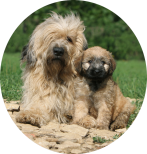
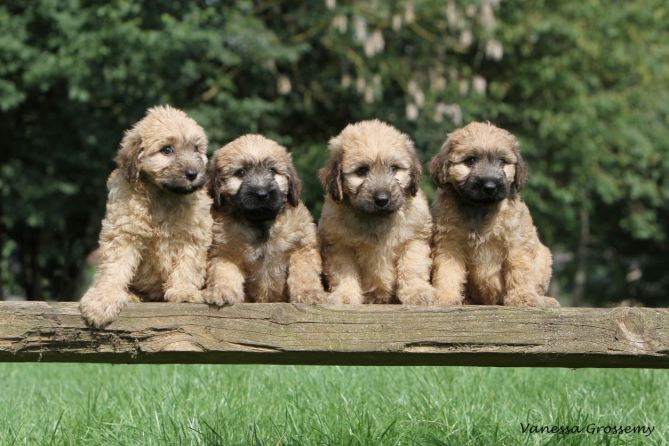
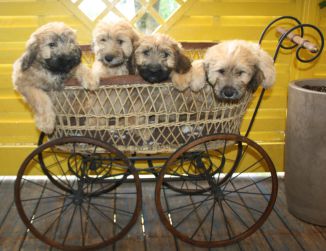
Prévoyer 1 à 2 heures de renseignements pour l'achat de votre chiot . Nous vous demanderons d'etre attentif et nous vous dirons ce qu 'il faut faire et surtout NE PAS FAIRE avec votre chiot
Nous vous demanderons de lire sa puce electronique , de tâter les testicules pour les mâles, et de regarder sa dentition.
Le chiot est vendu avec :
* une facture qui fait aussi office certificat de vente et de garanties
(renseignements complet sur le chiot puce nom etc... et vos coordonnées completes ) documents à parapher + signer en double exemplaires / un pour vous + un à conserver pour les impôts ...
* un passeport européen (obligatoire ) + primo-vaccination C.H.P.P.I. (Carré + Hepatite + Parvovirose + Toux du Chenil)
* un guide du chiot comportant les texte de loi
Arrêté du 31 juillet 2012 relatif aux mentions essentielles devant figurer sur les équipements utilisés pour la présentation des animaux de compagnie d'espèces domestiques en vue de leur cession ainsi qu'au contenu du document d'information et de l'attestation de cession mentionnés au I de l'article L. 214-8 du code rural et de la pêche maritime
* un jouet en peluche qui sera son "doudou" (jouet que nous achetons à Emmaus et qui sont désinfecter avant )
* Si vous le désirez nous vous revendons un sac de croquette de 15 kg afin d'éviter les diarhées ; dans le cas contraire nous déclinons toutes responsabilitées pour une diarhée.
Nous restons à votre entière disposition aprés l 'achat de votre chiot , vous pourrez nous contacter si vous avez besoin de renseignements , et surtout vous pouvez nous envoyer des photos que nous nous ferons un plaisir de publier sur notre site
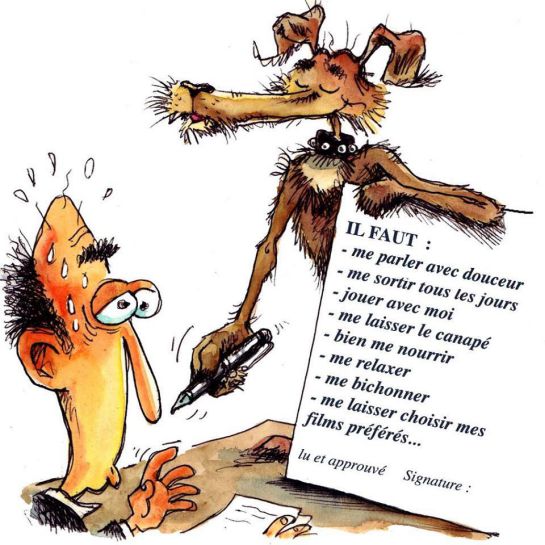
Afin de vous aider pour les différentes couleurs sur la race nous vous invitons à consulter auparavant cette page, en cliquant sur ce bouton :
